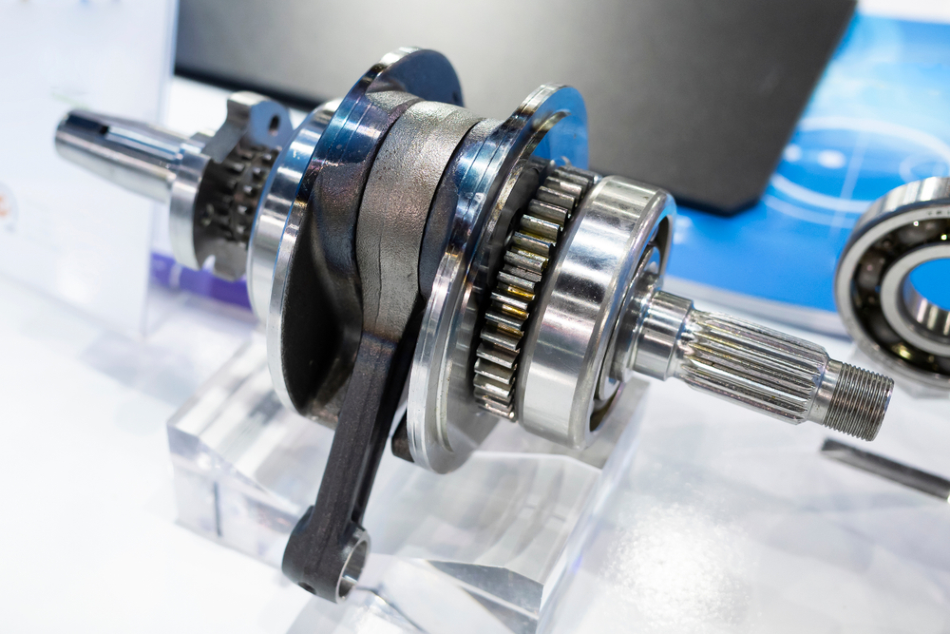
Image Credit: Aumm graphixphoto/Shutterstock.com
High-temperature alloys, also known as superalloys, are reputable for their durability. These alloys perform well regardless of high temperatures, pressures, and other substance-altering circumstances.
Additionally, high-temperature alloys also show high levels of resistance in oxidizing atmospheres. Advancements in chemical processing have allowed high-temperature alloys to be more accessible and employable.
Most commonly, these helpful alloys show traces of elements such as titanium, aluminum, niobium, vanadium, and tantalum. For titanium, niobium, and tantalum, hydrogen atoms generate hydrides - the product of hydrogen mixing with metals - which stimulates hydrogen embrittlement.
The complex process of hydrogen embrittlement - essentially, the fracturing of metal that is subjected to hydrogen - is not easily trackable, primarily because embrittlement can be caused by other external factors.
In terms of oxidation resistance, chromium is commonly part of high-temperature alloy’s structure. These compositions enable the superalloy’s robustness, solidity, resistance (e.g. corrosion, wear, oxidation, etc.), and aptness.
Industrial Automation and High-Temperature Alloys
For industrial automation applications, common high-temperature alloys are Hastelloy, nitronic, Incoloy, Haynes and several alloy types of Inconel metals. Names given to these industrial alloys have been granted by metal companies and technology-based corporations.
Superalloys are found in dozens of applications - whether it be in engines, turbines, or nozzles implementing these strong structures is both desirable and necessary.
Hastelloy can resist oxidizing temperatures over 1200 °C and carries great malleable qualities. The superalloy can function for almost 20,000 hours at nearly 900 °C; it is frequently used in gas turbine combustion cans and ducting.
Nitronic alloys are better known for resistance to wear rather than high temperatures. In industrial automation they are usually found in seating, trimming, valve stems, pump shafts, pins, and fastening systems.
Incoloy alloys are some of the best high-temperature metals to overcome oxidation and carburization. They are used in heat exchangers and in tube components.
Haynes alloys can perform up to nearly 1000 °C and inhibit oxidation, as well as carburization, just over 1000 °C. As both functional under high temperatures and an anti-galling metal, Haynes are best applied in combustion chambers, afterburners, springs, valves, and gas turbine engines.
Inconel metals contain various levels of nickel. Inconel alloy 600 contains a large dose of nickel, can function at approximately 1800 °C, and be used for furnace muffles, electronics, tubing, and heating.
Inconel alloy 601 has higher levels of chromium in its makeup, which generates better fighting against oxidation, and can resist corrosion or oxidation at temperatures above 1200 °C.
Alloy 601 applications are very similar to alloy 600. Inconel alloy 625 can operate up to 980 °C while withstanding oxidation and corrosion. 625 is found in marine equipment, afterburners, and fuel nozzles.
Lastly, Inconel alloy 718, has optimal strength from about -250 °C to 700 °C, as well as powerfully avoids oxidation up to around 1000°C. 718 is an application in rocket motors, thrust reversers, jet engines, pump parts, and nuclear fuel element spacers.
Difficulties with High-Temperature Alloys
Although high-temperature alloys can be extremely effective, they are often expensive and troublesome to create. Both ultrasonic machining and electrochemical methods are necessary to shape these desirable alloys.
There are materials that can be used in place of superalloys, but that does not mean they are on par with these metals’ efficiency, functionality, and longevity. Popular materials with similar qualities are advanced ceramics, monocrystals, and intermetallic compounds. Building materials like these are becoming advanced and getting overlayed with more resistant technologies.
Thus, if these materials are not of optimal strength and resistance, small additions can reach high-temperature alloy goals of functionality.
Conclusion
High-temperature alloys are beneficial in several industrial automation, including aerospace, electronics, vehicles, military equipment, rockets, and more. To ensure the least amount of corrosion, wear, and oxidation, superalloys mixture of metals and other production elements, enable unparalleled levels of durability.
References and Further Reading
Disclaimer: The views expressed here are those of the author expressed in their private capacity and do not necessarily represent the views of AZoM.com Limited T/A AZoNetwork the owner and operator of this website. This disclaimer forms part of the Terms and conditions of use of this website.